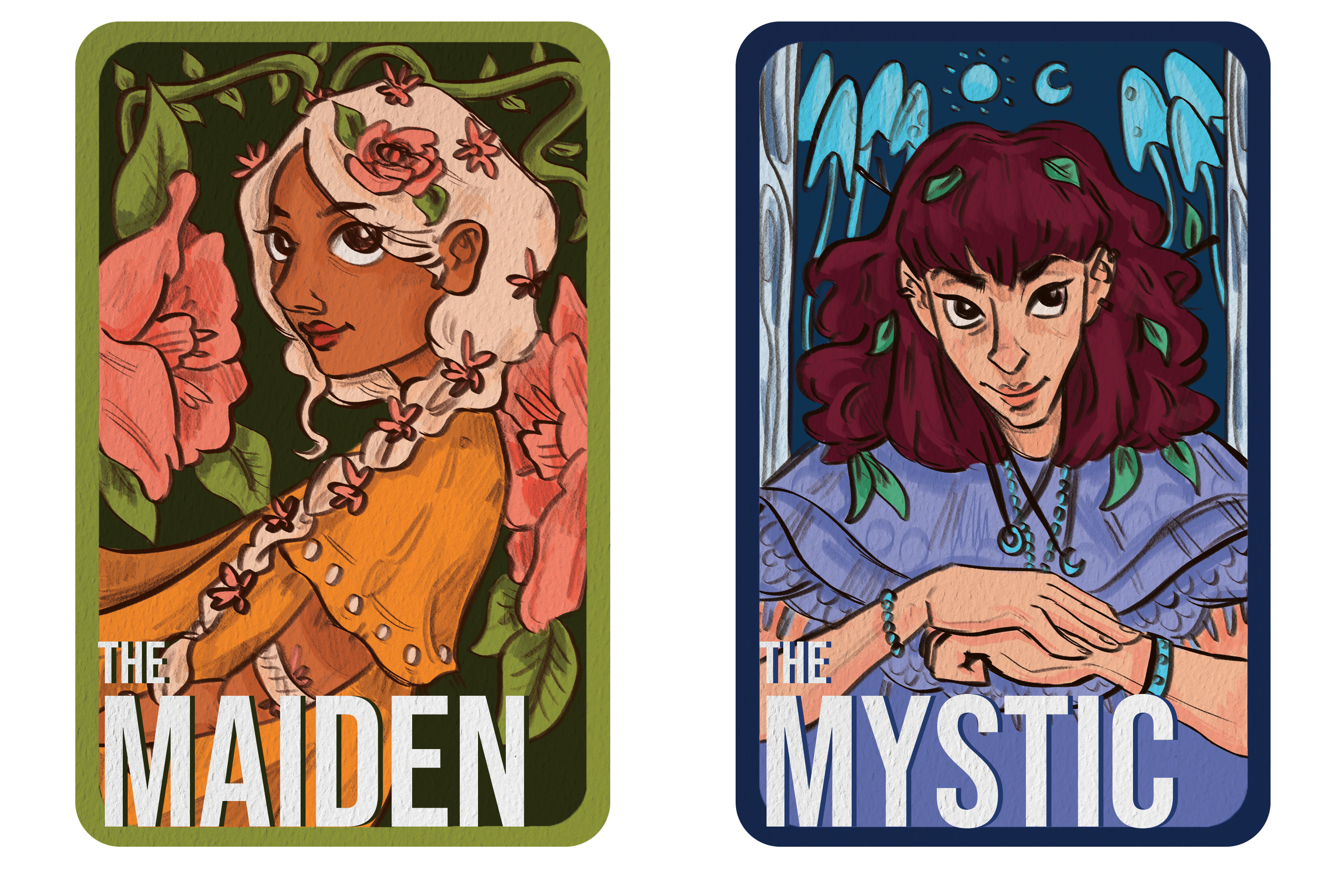This week’s features: the Maiden and the Mystic.
We are back for another week with our female archetypes! Quick recap: each week for International Women’s Month, I’ll be exploring the seven female archetypes.
The Maiden
Jumping right into it, we’ve got the Maiden and the Mystic archetypes (don’t they sound so cool paired together like that?)—the former typically being a symbol of youth and new beginnings and the latter, a beam of wisdom and insight.
Tap into your inner Maiden to unleash intuition, creativity, and potential for growth, all going hand in hand. She summons new beginnings and an effervescent, youthful quality. This archetype can be seen as embodying the concept of a rite of passage—when you begin something completely new, such as a career or relationship, it is common to rework your identity so that you enter the situation with a fresh perspective. Most frequently, it’s the depiction of a young girl just on the cusp of adulthood, discovering the world with wonder.
The Maiden exudes innocence, a certain vulnerability, and curiosity; I guess you could say that this is an archetype with the potential to have significant “character growth,” whether good or bad. The Maiden cultivates her agency and inner strength because of the hurdles she is facing or will overcome, all of which become central parts of her personality mosaic.
The best example in myth would be Persephone and her journey to the Underworld. Quick little synopsis: she was abducted by the God of the Underworld, Hades, and became Queen of the Underworld. In real life, take Audrey Hepburn as an example, especially in Breakfast at Tiffany’s. Always an icon, Hepburn portrayed the elusive, fun-loving Holly Golightly. Despite her tragic backstory, Holly was able to put it behind her and enjoy life as she saw fit. She accepted her past but did not let it define her, and instead used it as her strength.
However, the Maiden can easily be drawn to dangerous relationships due to her naivety. She can also struggle to make decisions for herself or be unable to take her life by the reins.
The Mystic
There is always something fresh and natural about her, and she is able to hold on to her youth even as she matures.
The Mystic is very inward-focused, and seeks balance within herself; characterising the concept of “growth in private.” She focuses on inner fulfilment and loves her time alone to work on herself from the inside out. She seeks truth to expand on her own consciousness and knowledge, an utmost asset.
This archetype embodies wisdom, spiritual insight, and intuition. She is very in tune with herself, seeks upgrades for herself, and herself alone, and develops a keen sense of self-awareness. She is also serenely perceptive, and seeks inner peace through living a meaningful life in her own control.
Take Grace Kelly for example; an American actress turned Princess of Monaco. In photos, she gives the impression of keeping to herself, almost in a detached way, and was said to be quite shy, even as a child. As I researched this archetype, I noticed how even in the photos of the late Princess Grace, there was a sense of mystery about her—it might be her demeanour or her expressions, but there is definitely a calm and focused serenity about her, which can be attributed to the Mystic.
Unfortunately, it is easy for Mystics to detach themselves emotionally from various situations. While this is great in some aspects, it prevents them from letting themselves fully feel their emotions because they’ve pushed them away. Along with this comes emotional distance, so the Mystic can often assume a cold and distant demeanour. It is easy to lose touch with reality when focusing on inner work, which is also a risk.
So, given the archetypes this week and last, which would you say you embody at this time? Remember, it can change as you grow, whether that be in age or in self —personally, I’ve seen myself in different archetypes at various ages. Check back next week for the final three!
